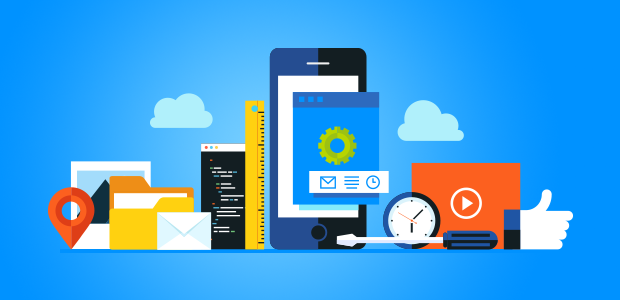The number of digital channels used by modern companies has become terrifyingly high. Businesses receive data about their clients, like their preferences and needs, sales orders and order cancellations through a great variety of data channels. In order to use all these pieces of information in a proper way, companies commonly apply different marketing automation tools. Such solutions allow B2B marketers accurately target their prospects and customers with the right emails at the right time.
Let us have a look, for example, at bpm’online. This cloud based marketing automation tool helps companies identify clients’ needs and nurture their interests, so that they could be transferred successfully into opportunities. The platform provides sales departments with 360-degree view of their customers, as well as a number of tools for lead management, email marketing, synchronization and import of data, business process management, and so on. An important advantage of this CRM-oriented software is that it can be used both on the agents’ computers, and on other devices, such as laptops, smartphones, etc.
Key Advantages of Marketing Automation Tools
Generally, the marketing automation software enables marketers to be more effective and creative. It provides sales reps with an extensive overview of clients’ needs and preferences. As a result, they easily understand buyers’ attributes and behavior, and deliver more personalized service to every customer.
The list of marketing automation tools’ benefits includes the following:
- Increase of marketing effectiveness. CRM-oriented platforms automate repeated time-consuming tasks, which means the sales reps will get more free time for other important missions. As a rule, the automation process entails the tasks connected with creation of content, scheduling and execution of campaigns, managing personalized email campaigns, nurturing leads, and tracking data (especially when there are duplicate or inconsistent pieces of information).
- Possibility to manage leads more effectively. A good marketing automation tool is a perfect helper in combining different criteria. It can rearrange customers’ demographic and behavioral data, such as the lists of visited website pages, downloads, completed forms, etc. Besides, CRM solutions have lead scoring systems and can easily define ready-to-buy leads.
- Complete view of a customer. Most marketing automation platforms comprise multiple channels to create the most detailed prospect profiles and predict the behavior of the company’s prospective buyers.
- Easier achieving of sales and marketing objectives. After you’ve implemented a marketing automation tool, it’ll become much easier for you to track the way the sales reps are working with ready-to-buy leads.
- Improvement of ROI. It has been proved that the marketing automation platforms provide modern businesses a 10% sales-pipeline increase.
4 Steps to Implement a Marketing Automation Tool
Specialists advise to hold to the given plan, and you will get the most out of the chosen software.
Select a suitable platform
In general, choosing a marketing automation platform involves the same steps as when adopting any software for a business. The manager should conduct a comprehensive self-assessment of the company’s needs, staff capabilities, as well as financial resources. It is very important for him to discuss the questions with the staff and make sure they are ready to implement a new system. Ask your reps what kind of marketing automation toolset they’d like to use. Think over your business goals, the possibilities of your sales department, and the way you are going to measure success. The fewer questions you leave unanswered, the better.
Identify appropriate vendors
As soon as you conclude that a good marketing automation tool makes sense for your company, you should start researching suitable vendors. When choosing a software provider, make the list of the marketing capabilities you already have and the list of those you would like to possess. Decide which of them are critical for your business, and which are absolutely unnecessary. Once you’ve finished this research, shortlist the vendors that meet your requirements. Get in touch with the companies you’ve selected and estimate their responses. Eventually, the list of vendors should be pared down to two or three names.
Schedule the demo
Request the demos from the vendors you’ve selected and draw an analogy between them. Try to set up the systems within a relatively short period of time, so that you could make relevant comparisons. Pay special attention to the platform’s ease of operation, its major features and functions. Make sure, the vendor understands your business and marketing needs. Ask the software provider how long implementation takes place, what kind of support is included and whether your employees utilize the full functionality of the platform.
Check references and conclude a contract
Do not hurry to make the final call in respect of the marketing automation tool. Talk to someone who has already implemented the chosen solution, read clients’ reviews and complaints. Ask the person you’ve found some additional questions about the new system. Make sure you understand its performance features and hallmarks.
























